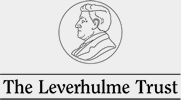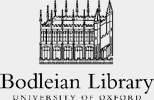Introduction to the Index and its data
The Digital Miscellanies Index [DMI] is a three-year project, funded by the Leverhulme Trust, and based at the Bodleian Library's Centre for the Book, and University of Oxford English Faculty. It forms a first-line index to the contents of about 1470 eighteenth-century poetic miscellanies, taken from the period 1700-1780. It is based on a comprehensive bibliography of eighteenth-century miscellanies, compiled by Michael F. Suarez. That bibliography uses a definition of a miscellany as a bound volume containing a significant proportion of verse by 3 or more people, and containing more verse than music. At least two thirds of the collection must be in English. We have used these principles as a way of delimiting our selection, and focussing on collections of verse. More comprehensive bibliographies, which include songbooks alongside verse collections, can be found in the Cambridge Bibliography of English Literature, and Arthur C Case's A Bibliography of English poetical miscellanies, 1521-1750 (Oxford, 1929).
Sources of books
Most of the miscellanies used in the DMI are in the Bodleian Library in Oxford, and within that, the majority are found within the Harding Collection. Many of the miscellanies in the bibliography are available through ECCO (Eighteenth-Century Collections Online), and where possible, data that has been taken from these facsimiles has been checked against hard copies. We have also used miscellanies in the British Library, The Folger Library, The National Library of Scotland and other research and copyright libraries.
Organisation of data
The information we have collected in the DMI falls into three main categories: records of miscellanies, records for poems, and records for people. These are usually connected to one another so that, for example, a miscellany record will link to individual poem records for its various contents, which will in turn be linked to people, either through the author we have attributed them to, or an author the miscellany compiler attributes them to. But there are also links between miscellanies, which form a series, or represent variants of the same collection. There are links between poems, which may be variants of one another, or parodies, or imitations. And people can be linked to poems and miscellanies as printers, booksellers, or dedicatees. We have tried where possible to make these connections visible. Within the index there are 40,000 poems, over 1470 miscellanies, and 5000 person records.
Searching the Index
The data stored in this index can be searched in various ways. It can be searched through poem, miscellany, or person. Within those categories, each one can be searched by the terms recorded within it, eg. by title, genre or format, in the case of a miscellany, or in the case of a poem, by first line, author, or theme. It is also possible to combine searches across multiple fields.
Miscellanies
The record for each miscellany lists: full title, date and place of publication; printer or bookseller; format; part or volume number; total number of pages; genre; a bibliographical transcription of its title page. We have also recorded, where known: price; what other miscellanies it is related to; ESTC number and Gale [ECCO] document number; shelfmarks of the copy checked; whether or not the volume has a subscription list; dedication or prefatory matter; plates; and notes on the copy checked. There is a link to the ESTC record, which contains information on libraries holding the book, as well as a link to the ECCO text, at the top of the miscellany record. The ECCO document number can also be used to locate an electronic version. Some miscellanies are also available through Google Books; a selection of these, together with introductory essays, can be found on this website.
Poems
The key piece of information we have used to identify individual poems is the first line. We have not used titles, because these change from one miscellany to another. The title given within the miscellany is, however, recorded with the poem. In order to enable correct identification of poems in different publications, the transcription of the first and last line standardizes by modernising spelling, taking out capitalisation of nouns, omitting punctuation, and expanding contractions. The last lines are also recorded, along the same principles. We have also recorded: tune or refrain; links to other poems; whether it is an extract from a longer work; theme; genre; rhyme scheme and form; author; attribution as given in the miscellany; whether it is a translation; dedicatee or addressee; title given in the miscellany within which it is printed; page references; comments; epigraph.
People
Names of authors, or any other biographical figure associated with a book or poem are recorded as a given name, but they also have aliases, other names by which they are known. So, for example, the Duke of Buckingham can be found by searching for Buckingham, Normanby, or Sheffield. We have also recorded birth and death dates; gender; and notes on sources of biographical information. Where relevant, there is a link for the relevant entry in the Oxford Dictionary of National Biography.
How to cite the Digital Miscellanies Index
The Digital Miscellanies Index is maintained by the Bodleian Libraries, University of Oxford. Citations should take the form Digital Miscellanies Index, University of Oxford.
Contributors
The Digital Miscellanies Index has been led by Abigail Williams, and Jennifer Batt. It is the product of many hands, and many thousands of hours of work. The substantial data creation, entry, and attribution work has been done by a team of research assistants, led by, and including, Dr Jennifer Batt. They are: Adam Bridgen, Mark Burden, Louise Curran, Lucy Hodgetts, Kathleen Lawton Trask, John McTague, Dianne Mitchell, Ros Powell, Chris Salamone, Rudolph Slobins, Claudine Van Hensbergen, John West and Laurence Williams. The academic consultants who have guided the project are Adam Rounce, Michael Suarez and James Woolley.
Technical Development
The Index was initially built by Carl Marshall, at Oxford University Computing Services. It was further developed by Sushila Burgess and Jill Gravestock at BDLSS, Bodleian Libraries. The end user interface and xml version of the database have been built by Kelsey Nelson, Joe Gollner, and a team at Gnostyx Research.
Reporting errors and problems
Please report any problems with the system to: miscellanies@spc.ox.ac.uk.




